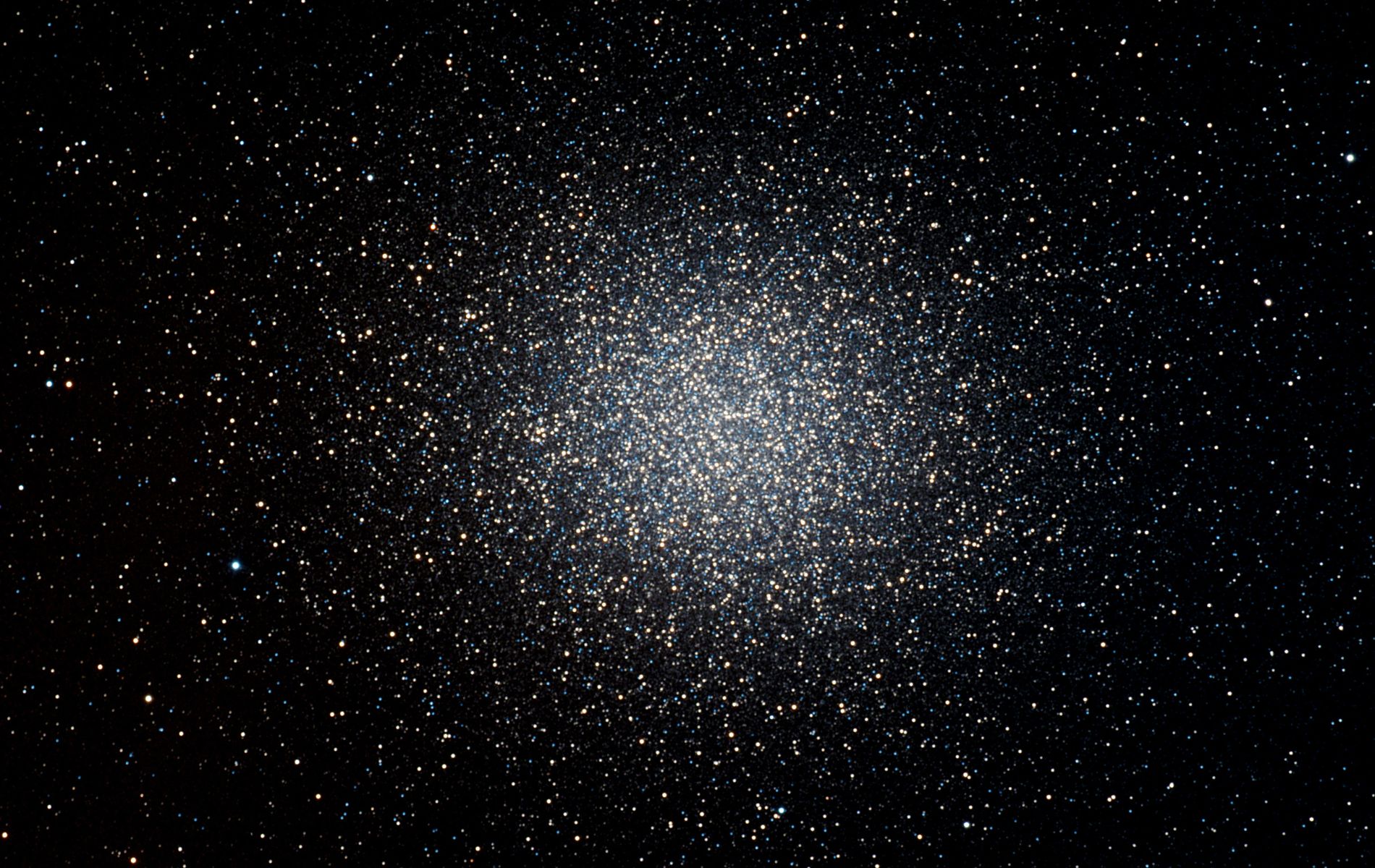At the center of the star cluster is the closest supermassive black hole ever discovered. With an estimated mass of at least 8,200 solar masses, this black hole represents the missing link in our knowledge of black holes.
Omega Centauri is a globular star cluster located in the constellation Centaurus. This star cluster consists of about ten million stars and appears as a faint dot in the night sky. Through a small telescope, Omega Centauri may not look much different from other globular clusters. But recent research has confirmed what astronomers have suspected for some time: Omega Centauri harbors a central black hole.
Nearest supermassive black hole
The researchers estimate that the black hole at the cluster’s center has a mass of at least 8,200 solar masses. This is special. “This black hole is about 18,000 light-years away,” says researcher Nadine Neumayer. “That makes it the closest known example of a supermassive black hole.”
This black hole lies between smaller stellar black holes and larger supermassive black holes. It appears to be the “missing link.” It is in an intermediate stage of evolution, with a much smaller mass than typical black holes found at the centers of galaxies, such as the supermassive black hole at the center of the Milky Way.
Different audiences
Black holes come in a variety of sizes. On the one hand, we have stellar black holes, which range in mass from a few solar masses to several tens of solar masses. On the other hand, we know of supermassive black holes, which have masses between millions and billions of solar masses. According to our current understanding of galaxy evolution, the first galaxies should have had intermediate-sized black holes at their centers. These black holes could have grown over time by swallowing smaller galaxies (as our own Milky Way has done) or by merging with larger galaxies.
hard to reach
But here’s the problem: intermediate-sized black holes are extremely hard to find. Galaxies like our own Milky Way have long since passed that intermediate stage, and now contain much larger central black holes. Small galaxies, known as “dwarf galaxies,” are generally difficult to observe. This means that with current technology, it’s very difficult to observe their central regions, where a black hole might reside. And while there are promising candidates, astronomers have yet to find such an intermediate-sized black hole.
Omega Centauri
But Omega Centauri is different. This is because this object is closer and more observable than other similar objects. Moreover, the star cluster appears to have formed from the core of a separate, smaller galaxy that merged into the Milky Way, halting its further evolution. Before this study, researchers already suspected that if Omega Centauri contained a black hole, the core of the galaxy and its central black hole would be, as it were, “frozen in time.” No further mergers would have been possible, and the black hole would have had no chance of growing. As a result, the black hole would have retained its size and would still look the same as it did when the Milky Way swallowed Omega Centauri.
seven needles in a haystack
However, to confirm this hypothesis, it would be necessary to discover a black hole at the center of Omega Centauri. This has not yet been achieved. The motion of the stars has provided some clues, but it has also left room for doubt. In New study So the researchers launched a hunt for a possible black hole at the heart of Omega Centauri. They created a comprehensive catalog of the motions of stars in the cluster. They measured the velocities of 1.4 million stars by studying more than 500 Hubble images of the cluster. A hell of a lot of work. “It was like looking for a needle in a haystack,” says researcher Maximilian Haberle. In the end, Haberle not only managed to compile the most comprehensive catalog of stellar motions in Omega Centauri to date, but he also discovered seven needles in a haystack: seven distinct, fast-moving stars in a small region at the center of Omega Centauri.
8200 solar masses
Stars move so fast because there is a large, heavy mass nearby. For a single star, it would be difficult to pinpoint exactly what this “heavy mass” means. However, the detection of seven such stars leaves no room for mere chance. It therefore rules out all explanations other than a black hole. By observing these seven stars, each with its own speed and direction, the researchers were able to infer the presence of a heavy mass at the center of Omega Centauri, with a mass at least 8,200 times that of the Sun. “This discovery not only ends the long-standing debate about the existence of an intermediate-sized black hole in Omega Centauri,” says Neumayer. “It is also the best candidate yet for detecting an intermediate-sized black hole in general.”
The researchers plan to study the center of Omega Centauri more thoroughly, including with the James Webb Space Telescope and in the future with instruments such as GRAVITY+ on the European Southern Observatory’s VLT and MICADO on the Very Large Telescope. They can pinpoint the positions of stars more precisely than Hubble, which will help answer deeper questions about the nature and behavior of black holes in our universe.





